| Umělec magazine 2007/4 >> The other half of Korea | List of all editions. | ||||||||||||
|
|||||||||||||
The other half of KoreaUmělec magazine 2007/401.04.2007 Konstantin Rubahin | east of eden | en cs de es |
|||||||||||||
|
This is how it all started: I needed to be in Paris urgently. A tourist agent, my friend, failed to get me a visa during a three-day period and I called Misha Kukushkin, an experienced traveler and journalist, to ask for suggestions. He suggested that I go with him to North Korea the next day.
Those who don’t know how to communicate with North Koreans won’t understand that if they promise to show the sea tomorrow, it means that it is not worth going there at all. People are very good there, albeit unpredictable. Comrade Cheng, an officer who shepherded our group, was very nice and then, on our way to the airport he suddenly said with grief, «We wanted to show you our best and you only made photos of our stains—beggars and dirty blocks; I’ll have to ask my colleagues at the custom-house to take your camera.» I discretely hid my flashcards and sat still with my eyes fixed on the floor – I managed one and a half thousand photos more than the camera. Later, when Comrade Cheng asked for “humanitarian aid” and received it from me at the rate of 10 euros (a good monthly salary there) I decided that his previous words were a sort of multi-move game. And I bravely made a photo of the airport façade. Airplane «Comrade Kim Chen Ir takes personal care of your flight.» That’s the first thing we hear instead of instruction on fastening our seat-belts. It is almost the truth. Indeed, Kim Chen Ir had personally organized several free flights from Russia to show us the victory celebrations of the Juche Idea. Juche is North Korea’s Communism based upon the idea that man can achieve everything by his labor.» Telephone Upon arrival all who did not know learned that mobiles are forbidden in North Korea. I left mine in Moscow and spent an uncomfortable hour and a half on my way to the Sheremetyevo airport. Others leave their mobiles at the North Korean custom-house. Brave ones hide their phones deeper and then called their friends from the frontier with South Korea, solemnly whispering, «I’m all right. It’s a complete fuck-up here. I'm not eating anything. Bye.» Mausoleum Pyongyang Mausoleum is ten times as big as Moscow’s. Generally, the space occupied by the mausoleum complex is larger than the Kremlin. The line to the burial-vault is almost equal to that leading to Lenin’s tomb during Soviet holidays. But this one is better organized: people are directed through the side entrance where, upon descending from a special tram, they move along an airport-style conveyor belt before passing through a metal detector, an X-ray machine and a gas analyzer, Kim Il-sung takes an hour and a half. One must bow three times: approach the body's feet and bow, approach his right side and bow, approach his head and simply stand, approach his left side and bow for the last time. Ladies are also supposed to weep. Grandmothers of Japanese Communism, contemporaries and companions of Comrade Kim Il-sung, all sobbed aloud, but our guide merely sniffed symbolically as she dabbed her eyes with a handkerchief. Here, against the background of solemn music, only regular sniffs could be heard. But in the next hall, players tragically lamented. Professional radio voices pronounced foreign translations of mourning speeches: “…and tumbling tears of the nation smelted stones and became stones themselves and rested forever here, in the place where all the progressive humankind, all people of the world said goodbye to the great leader Comrade Kim Il-sung.” North Korean ladies in mourning garments, who worked in that hall either as guides or weepers, howled very loudly and harrowingly and wringed their hands as in Kabuki theater. Nowhere else had I heard more frantic lamentations multiplied in marble arches of the hall. Warehouse of the Leaders’ Presents The Museum of Presents is a sort of headquarters in the event of bombing and rocket attack against North Korea. To be sure, leaders do receive approximately one present per second, the space of two museums of presents received by the incumbent leader and the Mausoleum inhabitant was obviously meant for even more. Kilometers of corridors were carved into a mountain, a subway without trains, a ceiling ten meters above your head, a straight marble gallery leading to infinity, and doors, doors, and crossing corridors everywhere. Probably one out of fifty doors opened before us; the others were sealed. On the outside, the view is very unpretentious: two little pagodas masking entrances to underground museums of presents. The presents range from golden eagles and cars from Stalin to Apple computers behind glass, a collection of vodka from the CPRF (Communist Party of the Russian Federation) and a rifle from Putin. And here is the carriage, in which great Kim Ir Sen traveled having been afraid of flying. Traffic-Controllers and the Military. It is prohibited to make photos of the military, though there are special soldiers with whom it is even recommended to be photographed. They say that the army here is super-strong and if South Korea attacks, they’ll be demolished. Still, it is not that simple to see it. But then, you can observe the traffic-controllers at road crossings. They move like robots as they adjust their movements and freeze in postures, which for someone means permission to go and for others not. By the way, roads in North Korea have eight lanes and the number of cars amounts to a pair per kilometer. It is a dream of motor-car enthusiasts who are not numerous there. Shopping Visitors are only taken to special shops here. Local currency can only be received as a souvenir. In special shops everything is sold for euros. These shops are like local “Beriozkas.” (Beriozka – the name of hard currency stores for foreign tourists in Soviet era). Besides Sony tape recorders they sell snakes in vodka, local beer, embroideries, carpets, and, of course, ginseng, which is the major object of foreign consumption. Through the Beriozka’s window, which faces the backyard, we can see a queue waiting for beer. Food and Smells If you smell something like a used diaper in vinegar, it means that you have been taken to a North Korean restaurant. In the Country of Morning Freshness, don’t be afraid of eating a dog. Be afraid of eating nothing. The very first lunch in an alien far-eastern land was a surprise. Those who know will tell you that in North Korean cuisine they often roast meat on a stove put on your table. So, we press pieces of unknown meat to a slightly warm stove (the situation with all kinds of energy carriers is tough in the country). Some are fully depressed by the vagueness of the meat's origin. Ok, we ask a waitress, “Dear, who are we eating here?” (many people in DPRK speak Russian). She answers, “Eat and don’t worry. It is not a dog. It is gousenitsa” —Russian for caterpillar. Ok, if it is a caterpillar then it must be some very meaty species – red meat and a pretty hefty carcass. We ask again another dear (or maybe the same). The answer is repeated. We demand clarification. Here it is. There are plates on the table with a picture of a goose on each. Here, the dear says, gousenitsa. Well, it was the most edible food that we were to encounter in North Korea. But we did not know that at that time. Usually, cold sour broth would be served with a skinny roasted young sea fish, beer, rice boiled without salt, oil, and spices, and of course kim chi. That’s a sour cabbage—they say there are 500 kinds of it in Korea and its aroma is predominant in local canteens. A sweet wet circle made of rice with starch and sausage is the most delicious, when crisp pieces of ice on it melt. It is strange that nobody was poisoned. The number of cockroaches withdrawn from that abundance by the end of our travel amounted to seven. Generally, food in North Korea is the biggest inconvenience after the lack of-freedom. The feeling of that non-freedom is similar to the feeling evoked by local cuisine – seems like you need to eat and you may do it. But somehow you don’t know how. Bicycles and Wheelbarrows… …are everywhere. And everyone necessarily carries something. If there is nothing to carry, they carry their kids. Arirang and Demonstrations It is obligatory to frequently attend demonstrations in festive North Korea. They are lucky to have hundreds of places for organized inspiration of citizens: from the main Mausoleum complex in Pyongyang to memorials to Kim Ir Sen, of which every North Korean town has more than one. Little scrawny Koreans, followers of the Juche Idea unite in columns of three-five members. Men wear costumes, women – national dresses. They bring their children to lay flowers; sometimes there are non-organized North Koreans – dads with children, pioneers, etc. Our outdoor supervisor, Major Comrade Cheng, said that individual people were also interested. The organization of human masses on the streets of North Korean towns is all-embracing: besides demonstrations there are rehearsals of parades and student mass dances or something like that, marches of pioneers, subbotniks and the most mysterious: squatting, which young people who look like students practice in parks. It would be all right if they squatted there and chatted. No, they squat in silence having put their bags in lines and covered them with wide strips of white cloth. “Comrade Cheng,” I say, “what are these people doing here?” “They are waiting for their friends,” was an irrefragable and very Zen answer. The major event, for which we were invited to North Korea, was Arirang. At a stadium, which can seat 140,000 people, an hour and a half show takes place, in which 100,000 actors participate. An unbelievable number of little Koreans on the opposite stand hold colored cards, which combine in patriotically changing paintings. On the ground, the show unfolds, the essence of which is how great it is to live in Korea and how awful it is that southern neighbors don’t live so great. But OK, they say, both Koreas will join soon and happiness will come. To show it they use children gymnasts, women officers, parachutists, who jump from a very low altitude, lots of fires, salutes, ranks and chains of organized people, who form geometrical figures, which flow one into another as a gigantic screensaver. Comrade Kim ordered that every resident of the Country of Morning Freshness watch Arirang. It seems to perform there every Sunday. So they all have something to do. Slogans and Flags Slogans and flags are seen in every field. Not to mention those in towns. People and Work People in North Korea work a lot. Epilogue Once I went from Moscow to Petersburg by train. I paid for the whole compartment and was given a conductors’ room. Various tools had been left under the seats. One of them, a drill, had been once used to make a hole in a wall between the compartment and a toilet. The accuracy of the hole’s position gave away its author – a locksmith, the only man on the train. I looked through the hole and thought that such pictures look much more exiting in films. I like Korea in pictures. All pictures used for article done by the author, Konstantin Rubahin
01.04.2007
Recommended articles
|
|||||||||||||
|
04.02.2020 10:17
Letošní 50. ročník Art Basel přilákal celkem 93 000 návštěvníků a sběratelů z 80 zemí světa. 290 prémiových galerií představilo umělecká díla od počátku 20. století až po současnost. Hlavní sektor přehlídky, tradičně v prvním patře výstavního prostoru, představil 232 předních galerií z celého světa nabízející umění nejvyšší kvality. Veletrh ukázal vzestupný trend prodeje prostřednictvím galerií jak soukromým sbírkám, tak i institucím. Kromě hlavního veletrhu stály za návštěvu i ty přidružené: Volta, Liste a Photo Basel, k tomu doprovodné programy a výstavy v místních institucích, které kvalitou daleko přesahují hranice města tj. Kunsthalle Basel, Kunstmuseum, Tinguely muzeum nebo Fondation Beyeler.
|







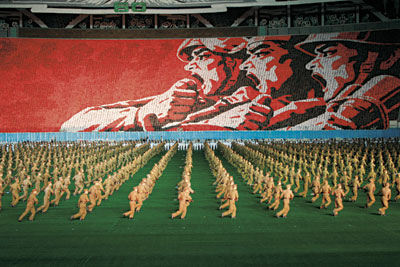


















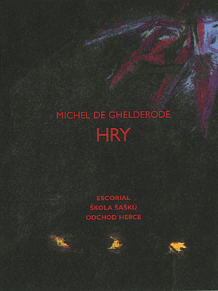




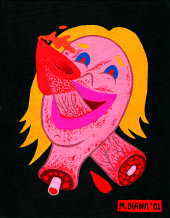

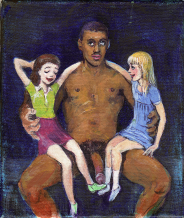
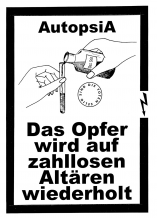


 We Are Rising National Gallery For You! Go to Kyjov by Krásná Lípa no.37.
We Are Rising National Gallery For You! Go to Kyjov by Krásná Lípa no.37.
Comments
There are currently no comments.Add new comment